It could be said that echinaceas start to flower at just the right time. Most begin to bloom in July to give the garden some extra oomph until the end of summer, just when some spring and early summer flowers are saying goodbye to the garden for another year.
The flowers are bold, long lasting and loved by bees and butterflies. When in full bloom they give off an eye-catching display that looks like it’s been a lot more difficult to nurture than it actually has. Who doesn’t have a soft spot for a plant like that? Grow them in the right place and they can make your garden colourful during mid and late summer for many years to come.
Plants for big impact
While the most familiar echinacea in gardens is probably the rather tall (1m/3¼ft), pink-flowered Echinacea purpurea ‘Magnus’, there’s a wide diversity of flower colours and different flower shapes, too. ‘Magnus’ has flowers with slender petals that hang down like a parasol or a lampshade as they age, to really show off the pompom-shaped, orangey-brown cones. It’s these cones that give the plants the nickname ‘coneflowers’ and make them so attractive to bees and butterflies.
Others, such as ‘Augustkönigin’ (1m/3¼ft) have flatter flower heads, with stiffer, wider petals, making them look more like giant daisies. At the other extreme are forms such as elegant E. pallida (75cm/2½ft), with slender, spidery, pink petals that look like strips of ribbon hanging below the central cone. For something brash and blowsy rather than slender and elegant, double-flowered ‘Marmalade’ (70cm/2¼ft) looks as if a classic echinacea flower has been invaded by an orange cheerleader’s pompom landing on top of it!
There are many colours available besides the classic pink, including two-tone flowers such as the lime-green and hot pink ‘Green Envy’ (1m/3¼ft). For some warm colour, try strawberry red ‘Sombrero Salsa Red’ (50cm/1¾ft) and don’t forget there are some classy white forms, such as short and stocky ‘White Swan’ (60cm/2ft), to give the garden some cool and calming colour in the heat of summer.
See the gallery for our pick of the best echinaceas for big impact
The best echinaceas for big impact
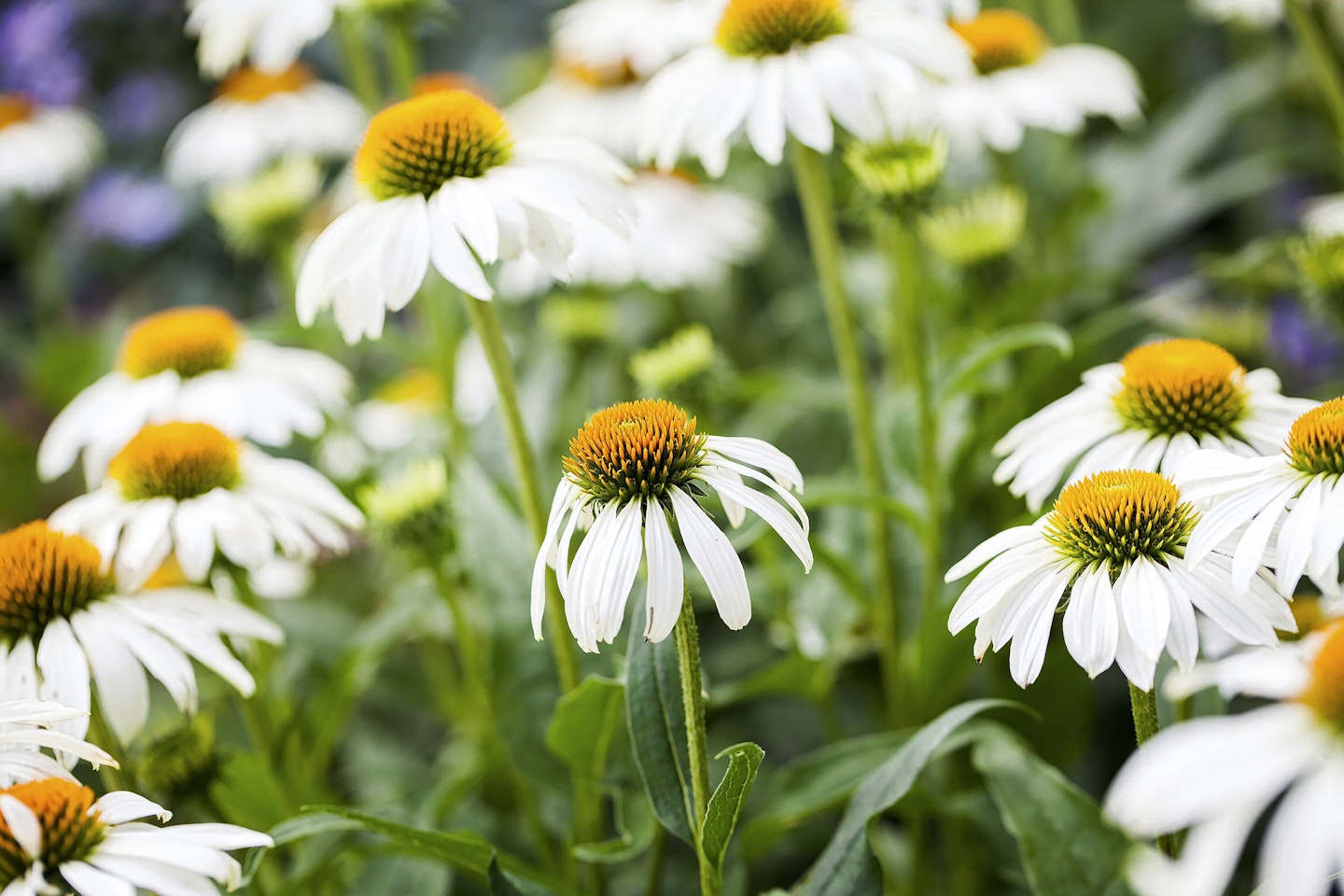 1 of 6
1 of 6'White Swan'
'White Swan'
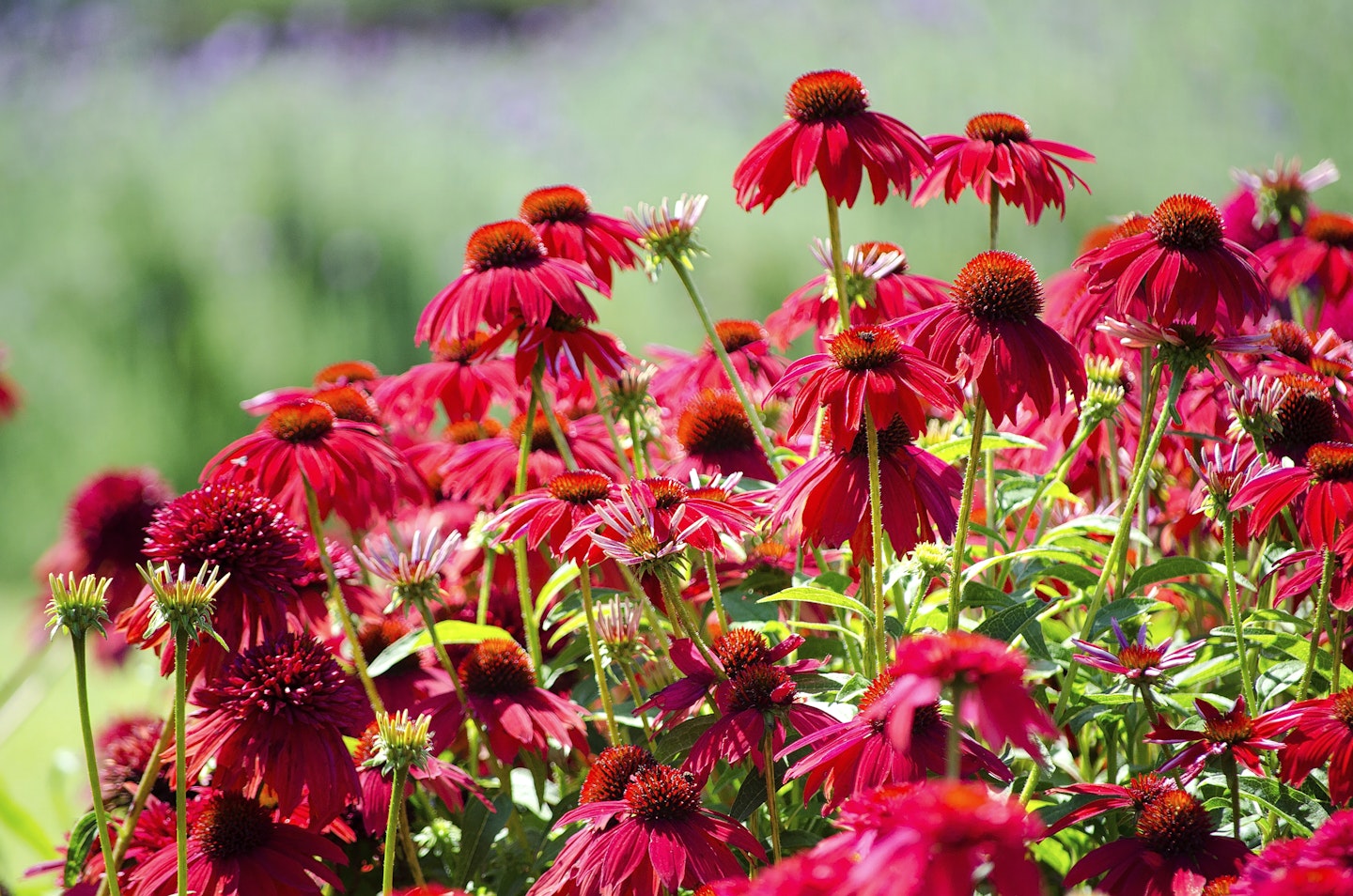 2 of 6
2 of 6‘Sombrero Salsa Red’
'Sombrero Salsa Red'
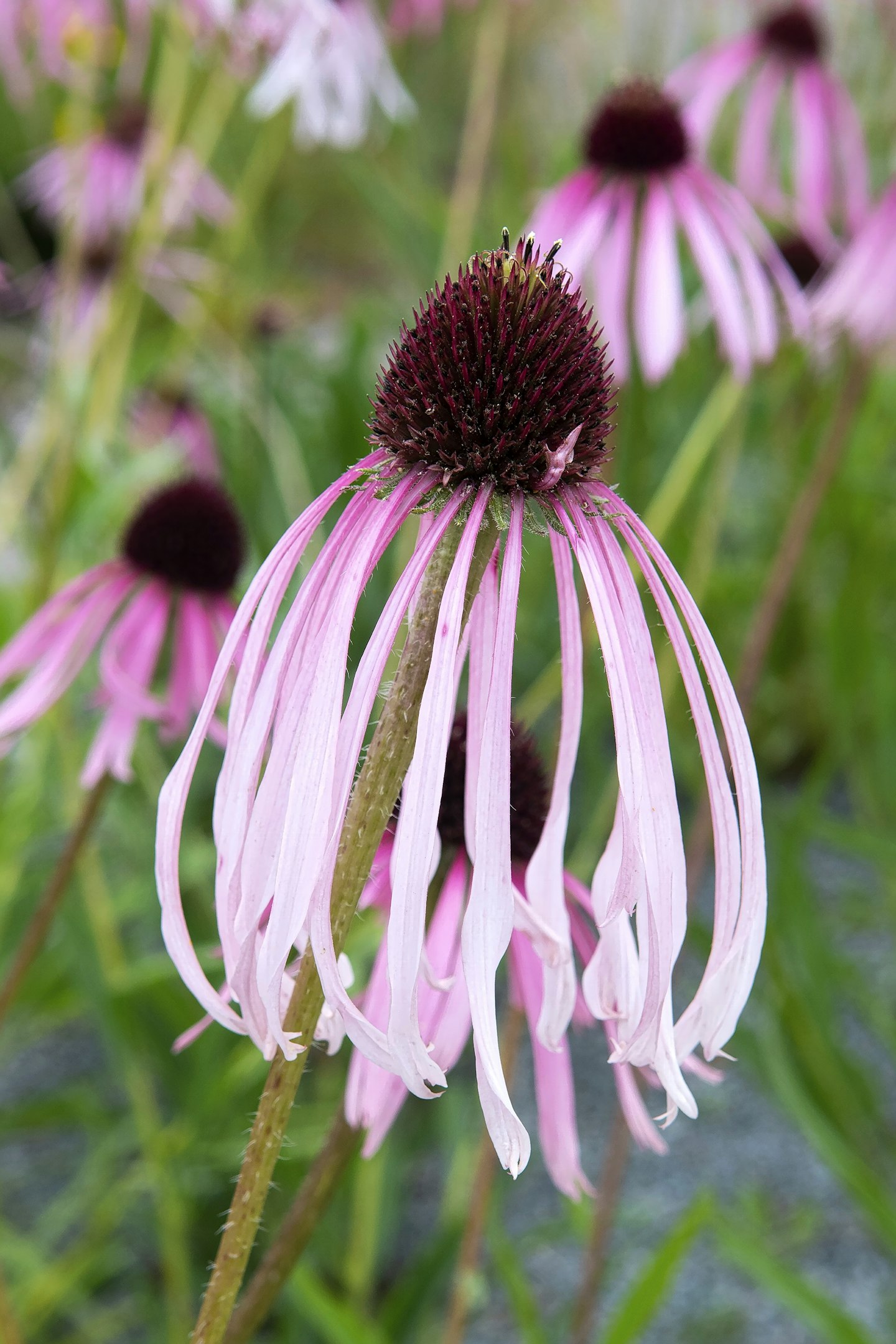 3 of 6
3 of 6Echinacea pallida
Echinacea pallida
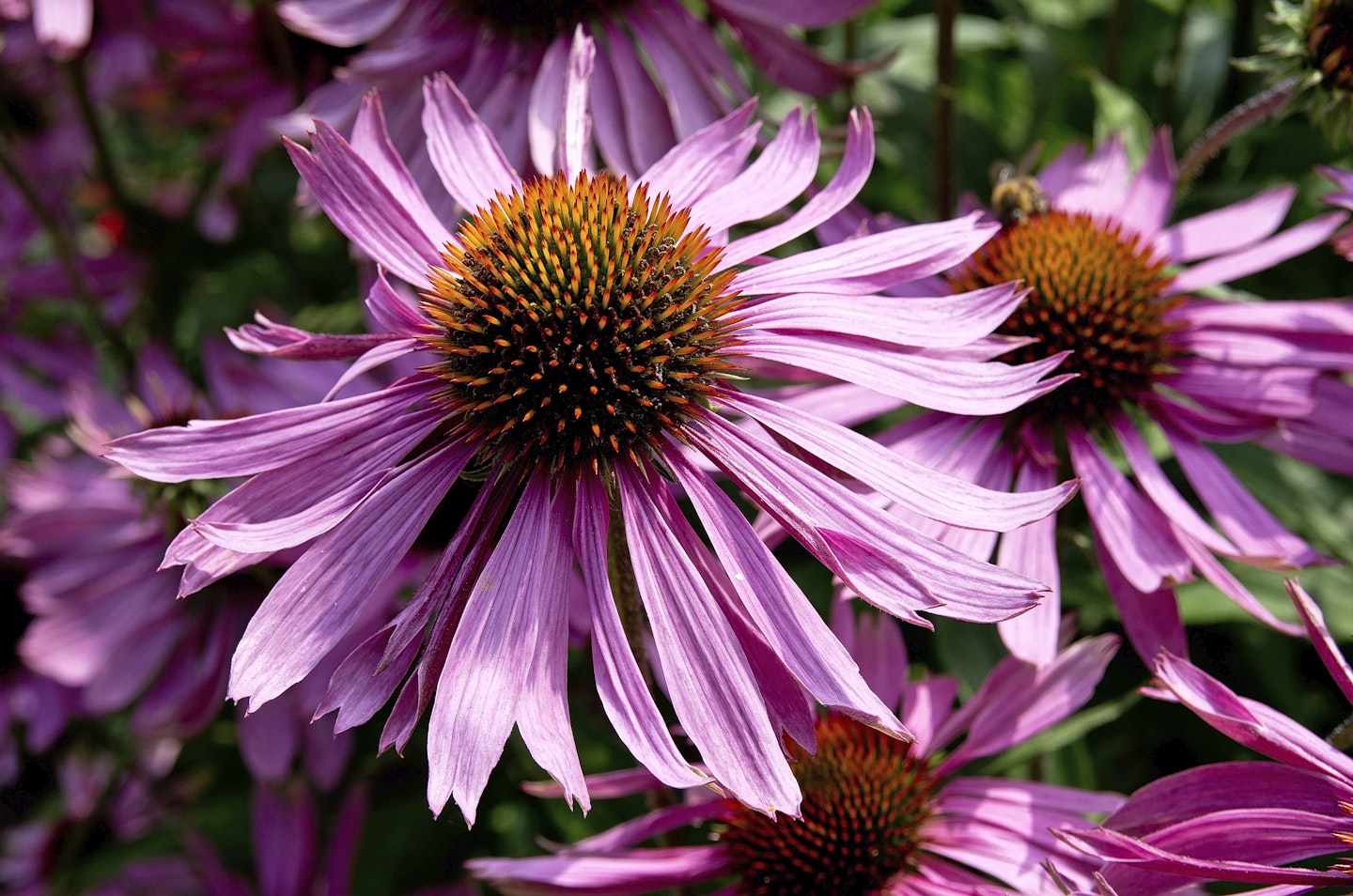 4 of 6
4 of 6‘Augustkönigin’
'Augustkönigin'
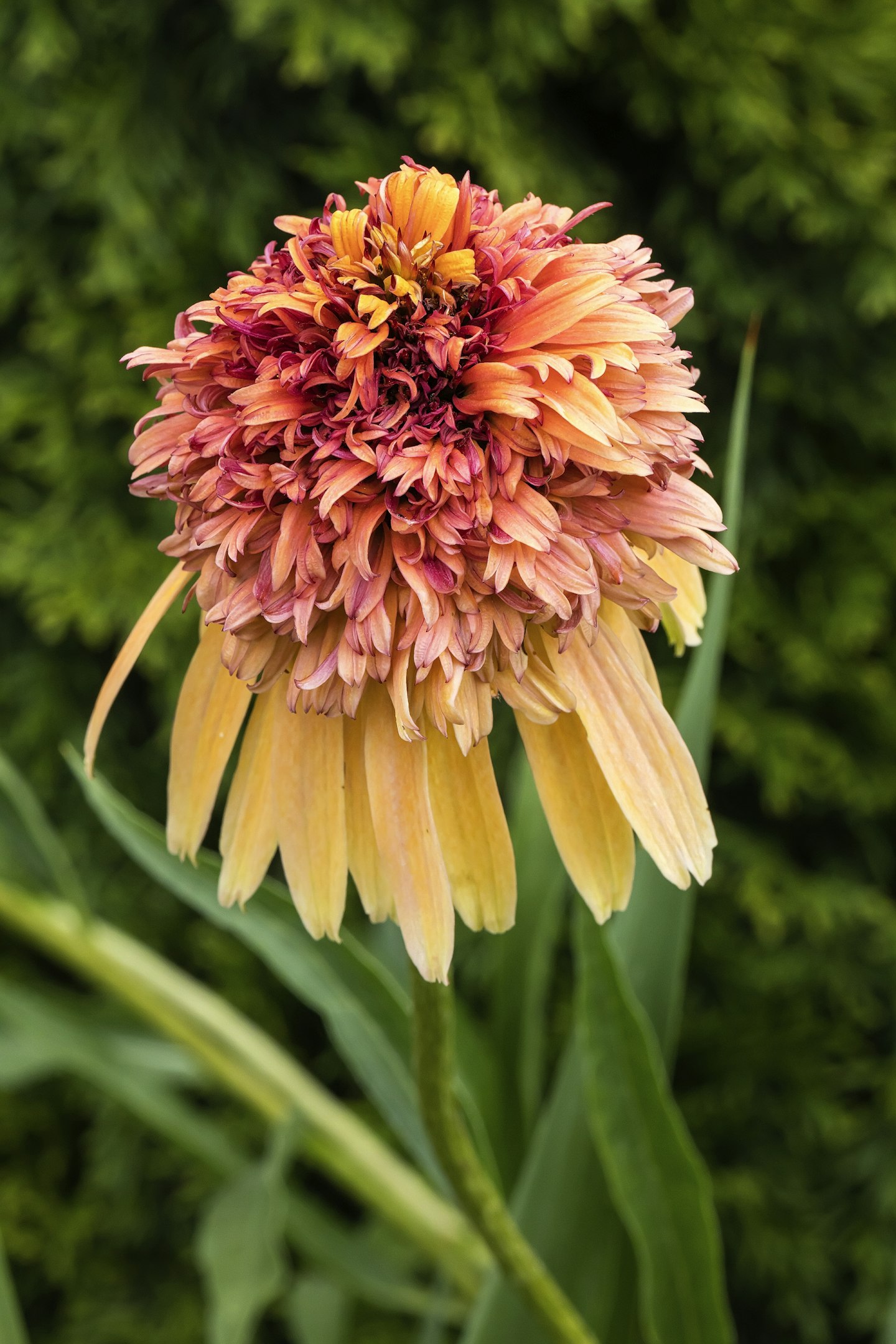 5 of 6
5 of 6‘Marmalade’
'Marmalade'
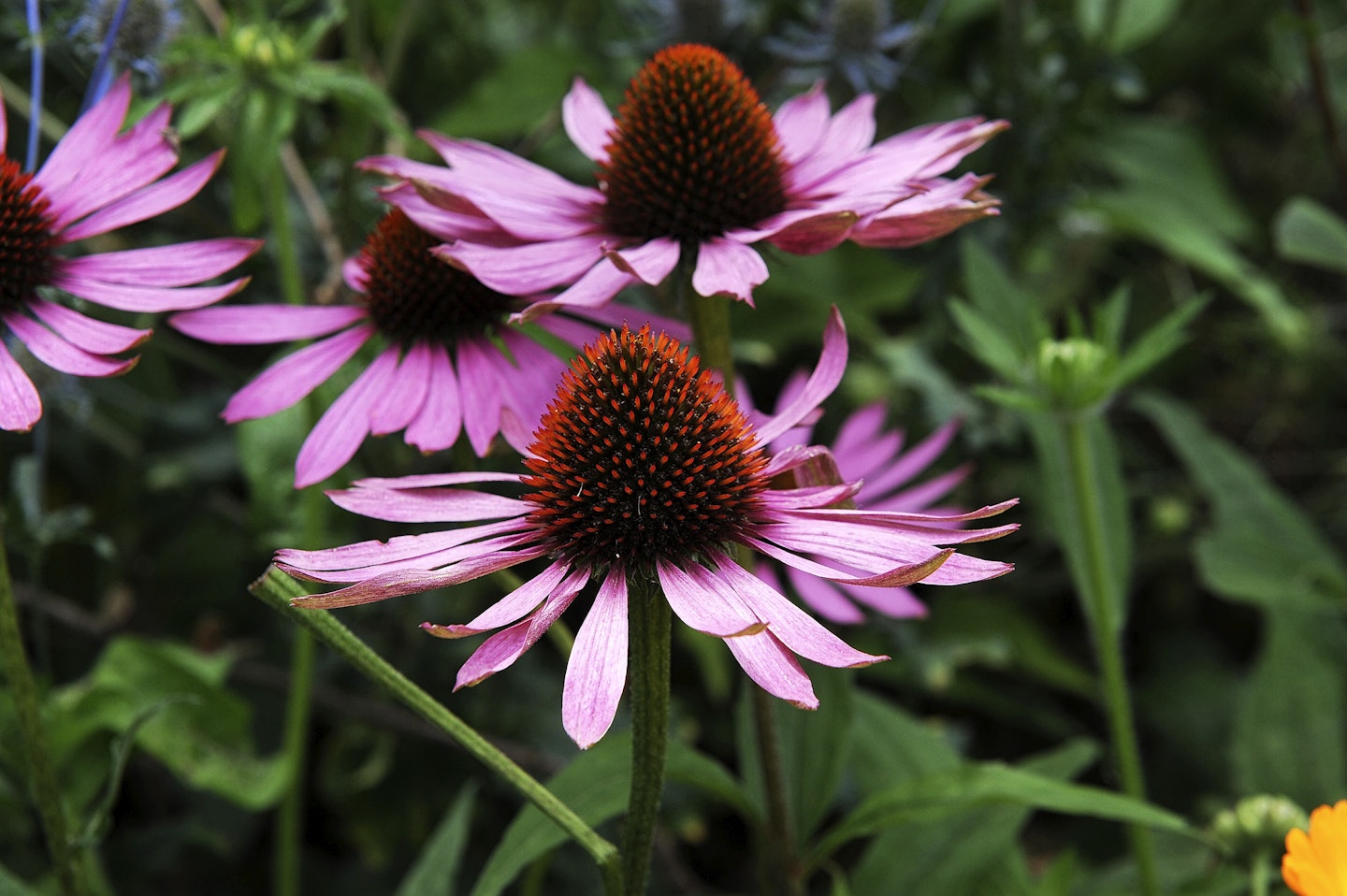 6 of 6
6 of 6'Magnus'
'Magnus'
Growing echinacea in pots
● The best echinaceas for containers are arguably the shorter, stockier varieties such as buttery-yellow flowered ‘Golden Skipper’ (height: 50cm/1¾ft) or the double-flowered orangey/red ‘Cheyenne Spirit’. These will allow for a container display that isn’t showing off a lot of bare stems. However, tall echinaceas can work in pots if cleverly positioned to allow the plant to mingle with others nearby, or if the plant is used to frame an entrance or stand out against a painted wall.
● To achieve a free-draining mix that will help the plants survive winter, mix together equal parts John Innes compost with half multi-purpose compost. Place an upturned 5cm (2in) plastic pot over the drainage hole of the pot to prevent it from getting blocked up. This is key to helping the plant stay dry over winter. Then add a large handful of grit into the compost for each pot, mixing it into the compost well and finally top-dress the base of the pot with more grit. Raise the pot onto pot feet or blocks of sawn-off wood. One clump of echinacea will be enough for a 30cm (1ft) wide pot.
The best place to grow echinacea
Like some humans, echinaceas enjoy the summer sun but don’t like getting their feet wet in winter! This is the most likely reason why echinaceas seem to just vanish in the garden and not return in spring after flowering the previous summer. Soil that drains very well and a position in full sun is best. If your soil is a very heavy clay, pot-growing is likely to give better results.
When planting echinacea, mix lots of well-rotted garden compost into the base of the planting hole with a garden fork, and add plenty of grit into the soil that you dig out for the planting hole, before filling the hole in. Spread a 5cm (2in) layer of grit or stones in a circle 20cm (8in) from the base of the plant in each direction. This will help drainage and will also serve as a slug and snail deterrent. Water well and be ready to water every three days in warm summer spells in the first year.
After the first year the plant will look after itself. If you have very small echinacea plants, grow them on in pots for a few weeks so that they’re bigger and more likely to shrug off a slug attack. Pot them into a bigger pot if the one that you bought it in has been completely filled by the plant’s roots.
